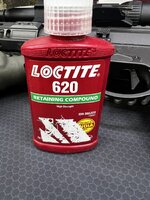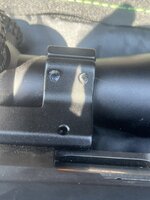No, that is not correct. Fingernail polish and paint pens are being used because they dry and hold better than blue Loctite. It is not unseal to pull screw out days or weeks after installing them and finding the Blue Loctite still liquid.
Then about every scope ring and screws made are, as it’s happened to lots of them. Paint pens and nail polish work regardless.
What brand / kind of paint pen are you using. Amazon has a bunch of them.
People are reading this stuff, and it's really wrong. I hate to see our readers be so misled.
There's no comparison between Loctite, and stuff you guys are talking about.
I'll try and explain better.
I recently retried from the Industrial machinery and manufacturing industry, worked with fasteners constantly, and failures. Worked with Loctite my whole career, in many applications, in different companies. Trained extensively the whole time.
Loctite is the biggest, and best, adhesives company in the world. For a reason.
It would blow your mind at the number of product's they offer, specialized for any scenario, and the science that backs it up.
To understand the application we are concerned with, 'keeping scope ring screws together' 'until you want them apart', you have to why there is a problem in the first place.
Thread mating, and clearance. The male threads are slightly smaller, than the female threads, they have to be, or they would bind up upon assembly. You know this, because when the screw is almost all the way in, it wiggles a little bit. But you snug it in, and the friction keeps it from undoing, until heat and friction take it toll, and let it loosen.
Then comes the adhesives, to help keep that loosening from happening. And they are Not all equal.
Loctite is not just an adhesive - here comes the science... Loctite also expands when drying.
Remember the clearance thing? Loctite fills up those gaps as it expands, providing additional friction and securing the screw in place. If done correctly, simply works very, very well.
The correctly part is simple.
Make sure the threads are clean and dry.
Use primer when needed, or Primerless Loctite (243).
If you have a unique application - they have a product for that, read the instructions.



